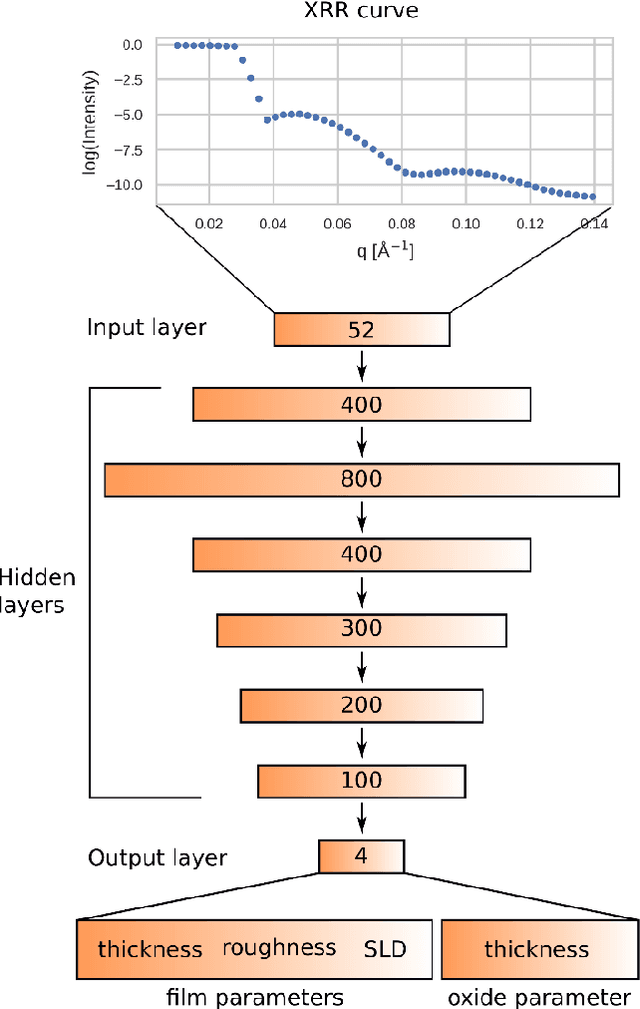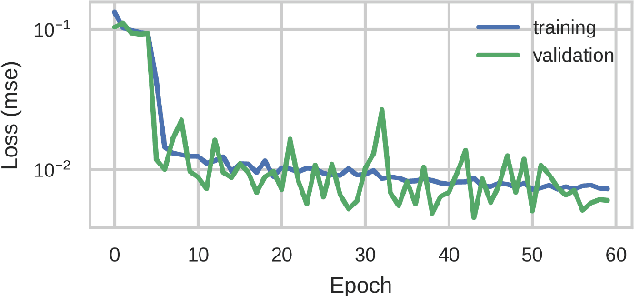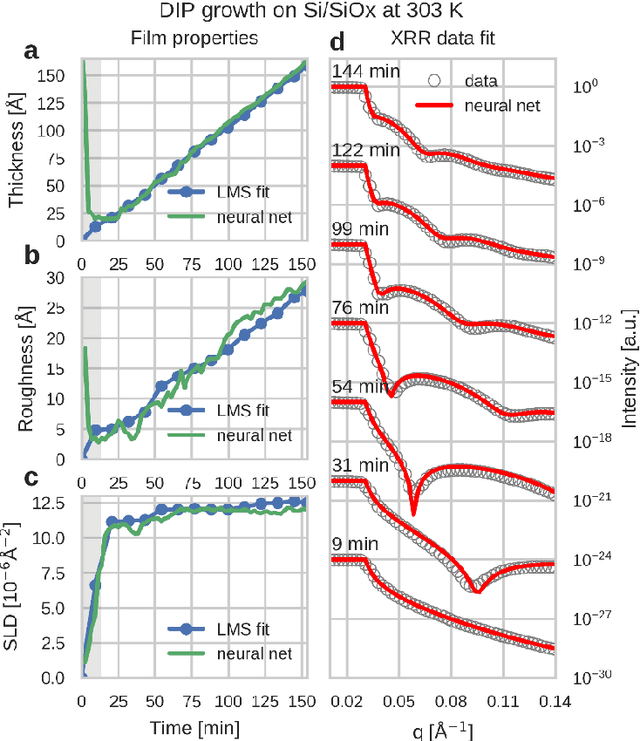Stefan Kowarik
Universität Graz Austria
Neural network analysis of neutron and X-ray reflectivity data: Incorporating prior knowledge for tackling the phase problem
Jun 28, 2023Abstract:Due to the lack of phase information, determining the physical parameters of multilayer thin films from measured neutron and X-ray reflectivity curves is, on a fundamental level, an underdetermined inverse problem. This so-called phase problem poses limitations on standard neural networks, constraining the range and number of considered parameters in previous machine learning solutions. To overcome this, we present an approach that utilizes prior knowledge to regularize the training process over larger parameter spaces. We demonstrate the effectiveness of our method in various scenarios, including multilayer structures with box model parameterization and a physics-inspired special parameterization of the scattering length density profile for a multilayer structure. By leveraging the input of prior knowledge, we can improve the training dynamics and address the underdetermined ("ill-posed") nature of the problem. In contrast to previous methods, our approach scales favorably when increasing the complexity of the inverse problem, working properly even for a 5-layer multilayer model and an N-layer periodic multilayer model with up to 17 open parameters.
Closing the loop: Autonomous experiments enabled by machine-learning-based online data analysis in synchrotron beamline environments
Jun 20, 2023Abstract:Recently, there has been significant interest in applying machine learning (ML) techniques to X-ray scattering experiments, which proves to be a valuable tool for enhancing research that involves large or rapidly generated datasets. ML allows for the automated interpretation of experimental results, particularly those obtained from synchrotron or neutron facilities. The speed at which ML models can process data presents an important opportunity to establish a closed-loop feedback system, enabling real-time decision-making based on online data analysis. In this study, we describe the incorporation of ML into a closed-loop workflow for X-ray reflectometry (XRR), using the growth of organic thin films as an example. Our focus lies on the beamline integration of ML-based online data analysis and closed-loop feedback. We present solutions that provide an elementary data analysis in real time during the experiment without introducing the additional software dependencies in the beamline control software environment. Our data demonstrates the accuracy and robustness of ML methods for analyzing XRR curves and Bragg reflections and its autonomous control over a vacuum deposition setup.
Fast Fitting of Reflectivity Data of Growing Thin Films Using Neural Networks
Oct 07, 2019



Abstract:X-ray reflectivity (XRR) is a powerful and popular scattering technique that can give valuable insight into the growth behavior of thin films. In this study, we show how a simple artificial neural network model can be used to predict the thickness, roughness and density of thin films of different organic semiconductors (diindenoperylene, copper(II) phthalocyanine and $\alpha$-sexithiophene) on silica from their XRR data with millisecond computation time and with minimal user input or a priori knowledge. For a large experimental dataset of 372 XRR curves, we show that a simple fully connected model can already provide good predictions with a mean absolute percentage error of 8-18 % when compared to the results obtained by a genetic least mean squares fit using the classical Parratt formalism. Furthermore, current drawbacks and prospects for improvement are discussed.
 Add to Chrome
Add to Chrome Add to Firefox
Add to Firefox Add to Edge
Add to Edge